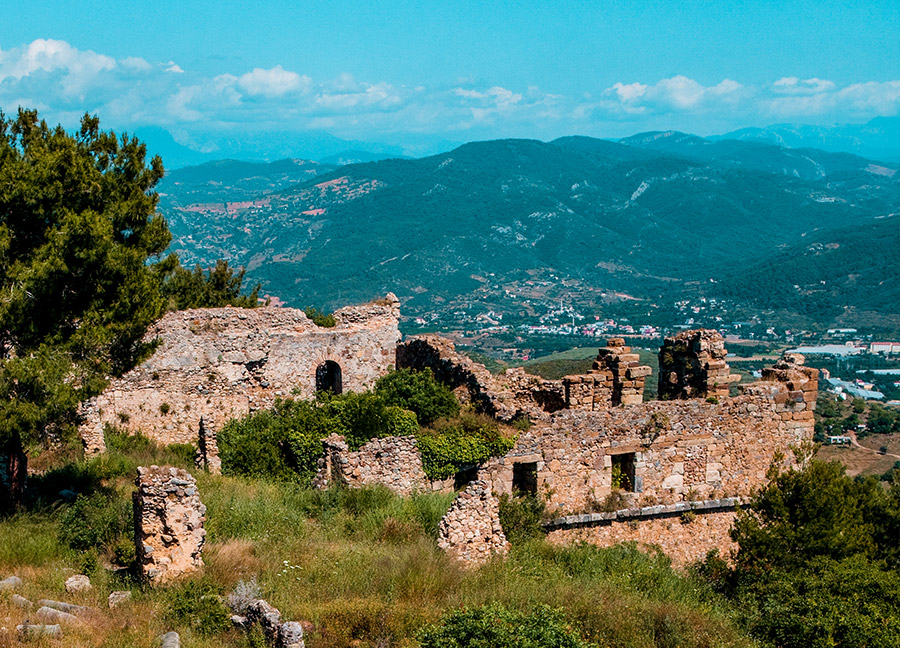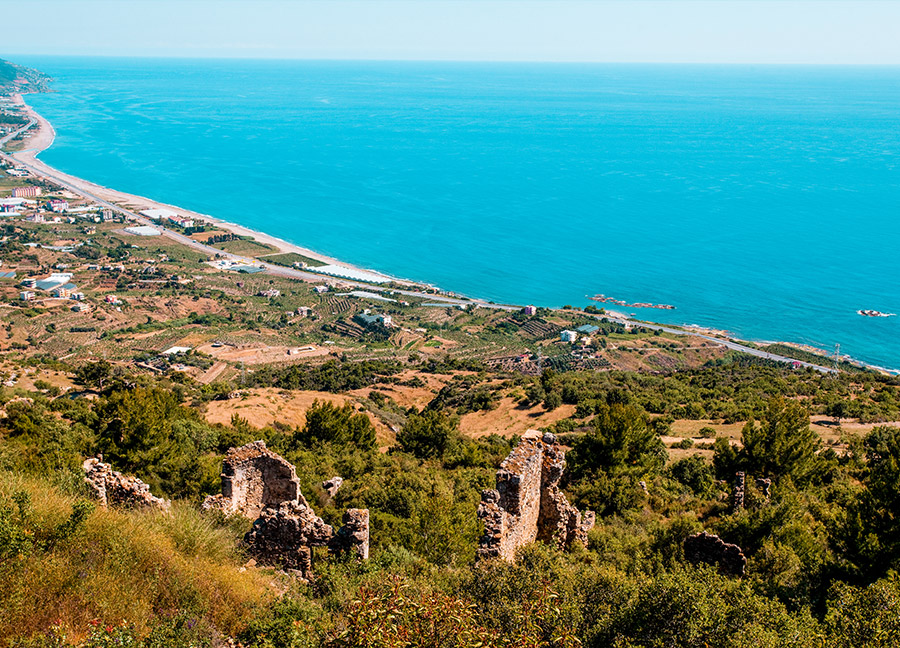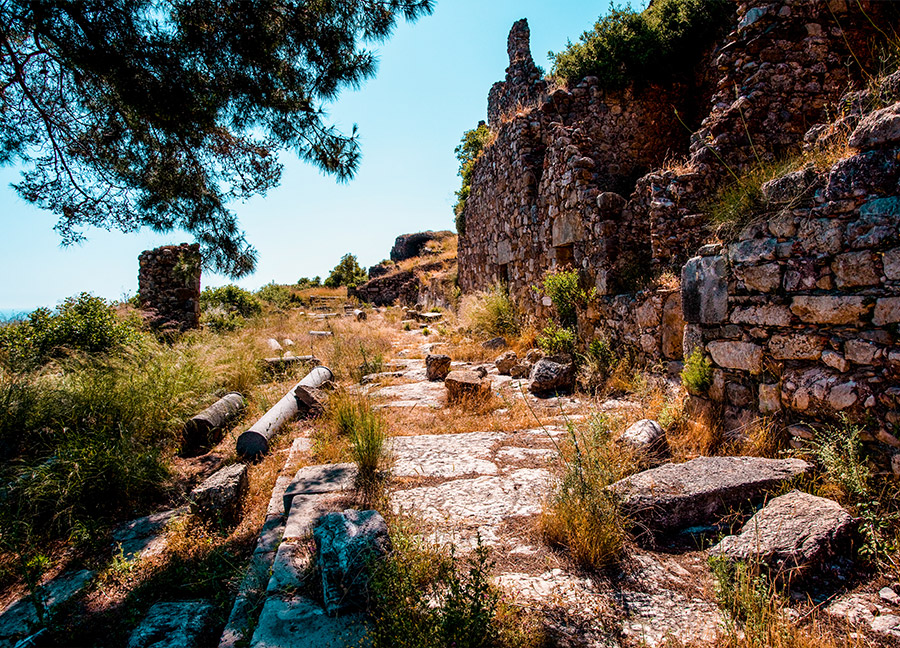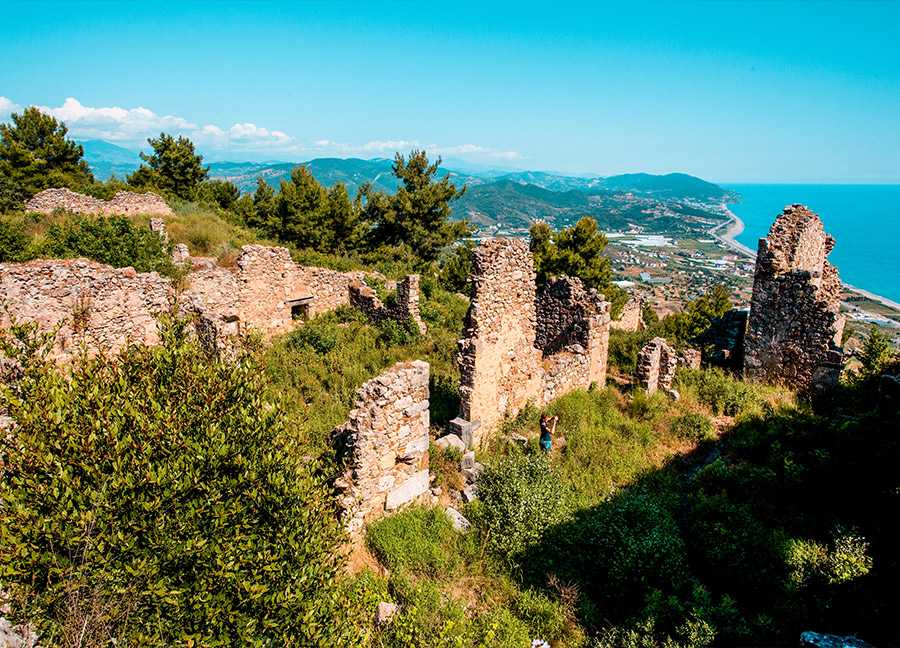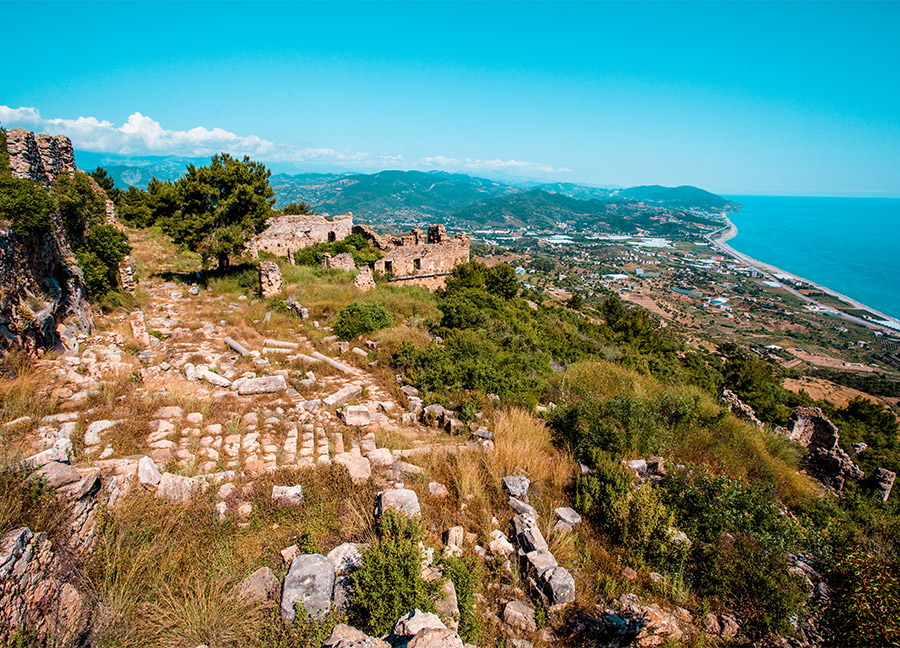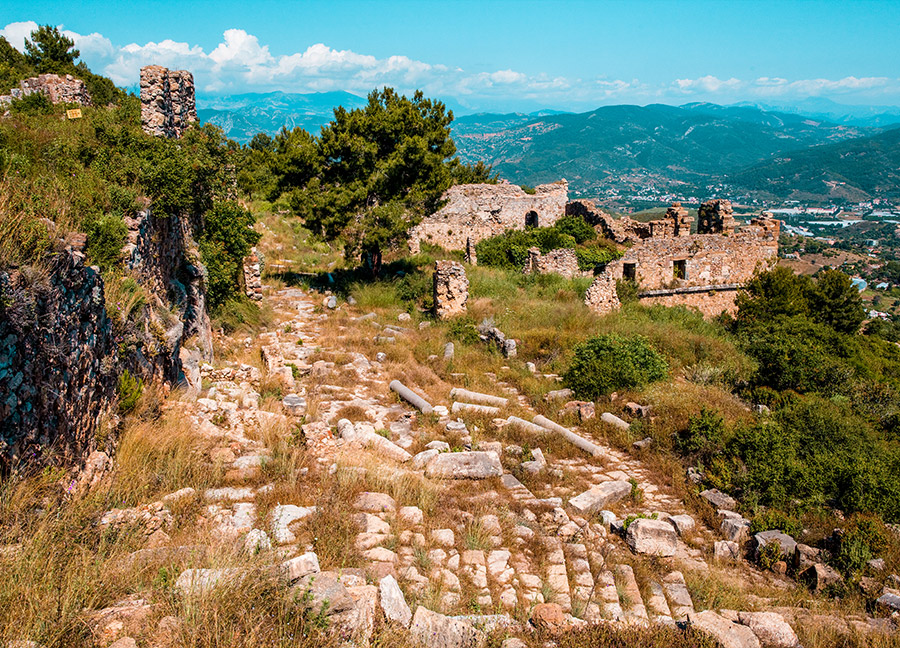Syedra Ancient City is known as the ruins where Alanya Castle is best viewed. The oldest known history of the ancient city is within the borders of Seki Village. It is approximately 20 km from the Alanya-Gazipaşa Highway dates back to the 7th century BC. Since the city is on the western border of the Cilicia Region, the city has an important historical and commercial location. The city started to mint its coins under the name of 'Syedron' during the reign of Roman Emperor Tiberius in 14-17. It is seen that the minting of coins continued until the period of Emperor Gallienus, which covers 253-268 years.
The ancient city of Syedra covers a very large area and is surrounded by walls. It is entered through the monumental gate in the west, which is still standing. To the east of the city has two main streets positioned parallel. There is a Turkish bath has a magnificent view with the remains of mosaics on the floor. A columned street extends in the north-south direction just to the west of the bath. The baptismal cave in which the niches carved into the natural rock are decorated with frescoes, the plastered cisterns fed by natural springs, the temple, the necropolis, the city gate, the parliament building, churches, mausoleums, theatre, shops, administrative structures are the works that have survived to the present day. Written statues based on important city points give information about the winners of the races such as athletics and wrestling and the organizers of these races. Numerous honorary inscriptions seen on the colonnaded street reveal the power and prestige of the city at one time. Niches were made in the wall to the north of the street. As a result of the excavations carried out by the Alanya Museum Directorate since 1994, it has been revealed that the columned street is 250 x 10 meters in size, in the form of an open road with a wooden roof carried by the columns on the north and a stone-paved road on the south.
The people of Syedra refused to participate in the rebellions against the empire in Rome in the 2nd century. For this reason, the city was named after the Roman Emperor Septimus Severus with a letter of thanks. He was honored in 194. This letter was written on marble and was shown to the public on the colonnaded street as a pride painting. Today, it is exhibited in Alanya Archeology Museum. In the Antalya Museum, there are mosaics from the Roman Period, which were excavated from the Ancient City of Syedra, depicting the scene of the abduction of Hylas by the nymphs in mythology.


